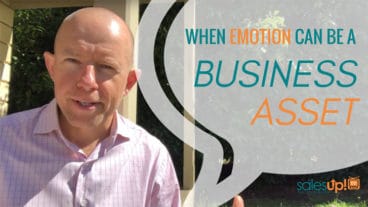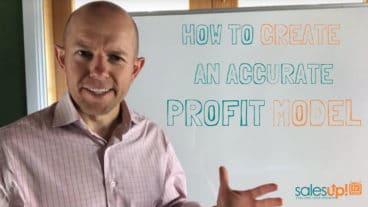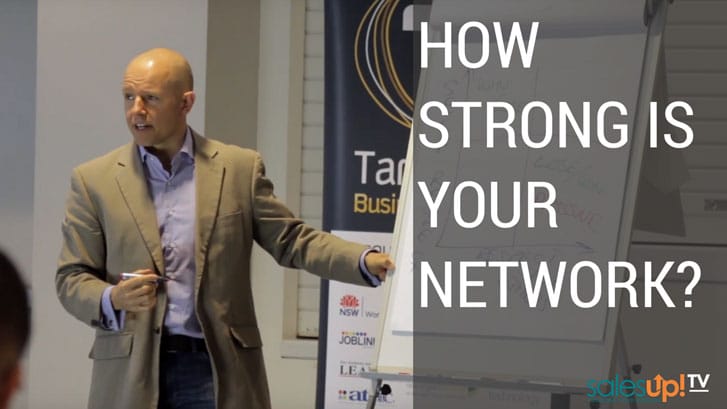It’s a little cliche and, at times, a bit hard to buy into, yet I still firmly believe that we (you, me and everyone else) can create whatever kind of life we want to have. And obviously that includes your business.
Although we all have different starting points in life, we all live in the same universe; meaning we all have the same resource available to us. Yes, some of us have it closer at hand and perhaps a little easier to come by, but that doesn’t mean the resources available are different for each of us; it’s just how we reach and what we DO with those resources that counts. But this is not a competition. It’s simply a matter of knowing what is it that YOU want.
For yourself.
For your business.
For your kids/spouse/dog/fish/etc.
It’s that ‘what’ which carries you through every day you draw breath on this planet, sustains you when you’re low, and bolsters you when things are awesome.
In the video here, I walk you through four key things you need to know and use in order to create the life and business you want.
This is not an exercise in dreaming or wishful thinking. This is a solid philosophy backed by hard science.
So what are you waiting for? Get in there and watch it!
Enjoy
Jamie
To Download the Free tools in the Video, Click HERE
P.S. If you know what you want your life to look like, but are having a hard time getting to the goods, check out our free 90-Day Planning Tool which can help you narrow down and hit those short-term goals – after all, as we know – “The journey of a thousand miles begins with a single step”.
P.P.S. If you’d like to learn a little more about SalesUp! Business Coaching and the work that we do, please watch this short video testimonial. We’re super stoked to work with some really awesome business owners and have been humbled and gifted beyond measure to help these fine folks create the life THEY want, and we’d love to hear from you too!
Videos
How to Create a Marketing Plan That Works (Part 1)
The marketing blueprint is really about getting inside your customer’s mind to understand how they think. When you can understand how someone thinks, you can speak to them in a way that is going to make a connection. That’s what marketing is all about.
Too often companies make the mistake of marketing in a way that resonates with their own thinking—not the customer’s.
When we do that, we are essentially pushing information out and forcing it upon people. It’s more of a ‘list to me, listen to me’ approach.
To give you another way of thinking about it: It’s like having a conversation with someone who is engaged with what you are saying, versus one who is too busy thinking about what they’ll say next and miss everything you’re saying.
In these two scenarios, there is a difference in the point of focus. The goal of the Marketing Blueprint is to be a listener before you become a speaker.
Does this take some effort? You bet. Is it worth it? You bet.
Not only does answering the Marketing Blueprint questions help you to connect with your customer, but it also helps you get really clear on who your customer actually is (believe me, it’s not as many people as you think). It helps you to be clear on why they will buy from you and on the true value you bring.
Answering these questions not only makes marketing easier, but they will guide your overall business strategy as well. It’s powerful stuff.
Do yourself and your business a favour, watch the video then set aside half a day with your key people to discuss the questions posed. The half-day you invest will save you a lot more than that down the track.
The Truth About Accountability
A culture of accountability has many advantages. Among them are:
- an increase in team performance (obviously)
- high morale (because people are growing and getting shit done)
- lower stress for you the leader (because you’re dealing with things proactively) ; and
- business results (when a team is thriving and executing, result have to happen – it can’t be any other way)
If that sounds attractive (and it should), then the question to ask yourself is “how effective am I at building a culture of accountability?” You’ll be among good company if your answer is lower than you’d like it. It’s a common trap—so let’s not stay there. Let’s take it up a notch (or 10). And here’s how you can do it.
First, the truth
You can’t hold someone accountable.
Sure, you could use all to go to tactics we see some parents using – yelling, guilt and shame (I don’t recommend any of those – in your business or with your kids) but would you rather that YOU have to change someone’s behaviour or would you rather THEY do it? Your true goal as a leader is to help people grow their sense of internal accountability. Your role is to help them either want to get it done or to develop the skills to get it done.
If a person has clarity on the need, the drive to do it and the skills and the resources to do it, they will act. The part of leadership that encompasses accountability is being able to identify and shift where a person has a block. It is usually one of those three elements that are lacking.
With that principle understood, let’s look at the tactics.
Step 1 – The Relationship
For communication to be effective, a relationship needs to be healthy. We listen most closely and openly to those we respect and those whom we feel respect and care for us. Knowing this truth, it is critical that your relationships with your team have a healthy foundation of mutual respect and care. So your first step in helping someone develop their accountability is to check with your own internal view of that person. Second, check in with your view of yourself – self-respect is critical.
Where respect and care are lacking, communication will have an edge, and the intent behind the act will flavour the communication in an unhelpful way, whether you mean to or not.
Step 2 – Clear expectations
To be accountable for something, you first need to know what you are to be accountable for. It sounds obvious, but over and over again we’ve seen lack of clarity between the leader’s expectations and that of the team. Put things in writing. Test your communication by having the person repeat back to you the communication they have received.
When it comes to clarity of roles in the business, we are big believers in position contracts that outline 3-7 key outcomes a person is accountable for. These are defined by criteria for success, so everyone is crystal clear on what the expectations are.
Step 3 – Framework for the conversations
We use a FeedForward system that is a document allowing two parties to have a candid and objective discussion.
The intent behind the discussion is how to help a person move forward vs. pointing out where they are doing badly. The conversation is driven by the team member, not the leader. The leader acts more as a facilitator to help the person discover opportunities for themselves in the three areas we previously identified (clarity on expectations, motivation, skills & resources).
When these conversations happen proactively (before there is a problem), the feeling behind the interaction is way different than when it is too late.
Now, if you have a situation that is already too late—no problem. Still get started immediately, but you’ll need to take complete responsibility for your lack of action to date. Before you can express your dissatisfaction with their performance or behaviour, you may need to own up to not being clear about expectations or giving more guidance before now. Always point the finger at yourself before pointing it at others.
There is a very good chance that if you feel there is a problem, the other person knows it too, or they are just plain unhappy at work. Either way, there is a good reason to get the issues on the table and sort it out. You both stand to benefit.
Ideally, you don’t want to let it get to that stage. Be the leader you know you are. Be assertive and give your team the gift of accountability. With a strong sense of internal accountability, everyone’s lives become better, and that will make your business better.
When your people grow, so does your business— sometimes exponentially.
Good luck and I’d love to hear about your experiences.
Cheers
Jamie
Emotion Can be a Business Asset
Time to Watch: 4:34
It’s important to know what your goal is and how you’re going to execute it, but sometimes one of the missing ingredients is having the emotional leverage or clarity around why you’re going for something and the drive to see it through. This clarity of emotion is a business strength you don’t want to ignore.
In the pursuit of any goal, there’s ups and downs, but it’s when things are challenging and going against you, that you need those emotional reserves. In this video I’m not going to walk you through the actual planning process—there’s a cracker of a guide HERE that teaches you how to do that—but rather, we’re going to go through some east steps to tap into those emotional reserves when you need them.
What you’ll need to complete this exercise is a blank piece of paper, divided into three columns and enter your information as follows:
- Write your goal in the middle column. The only guideline here is to make sure you are picking S.M.A.R.T. goals. That is, goals that are Specific, Measurable, Achievable, Results-oriented with a Timeframe. SMART goals are critical in the planning process, particularly so you can gain a better picture of what success for that goal looks like in reality.
- In the left-hand column, write all the “WHY” reasons which relate to the goal. Behind every goal is a feeling, an emotion – and the emotional result that you want to achieve through that goal. Don’t skip this step or shake this task as a feel-good, fluff piece that doesn’t have any basis—nothing could be further from the truth. What you want to distill here are all the emotional reasons you want to achieve the goal. For example – if the goal is financial and you want to pay down your mortgage faster, list the emotional benefits you will gain by doing so (more disposable income to travel, more time with family, helping your children financially—whatever it is that fuels your fire). It is the feelings you will get from achieving that goal that will sustain you in the low times.
- Finally, in the right-hand column is the “HOW.” Don’t worry about getting this column ‘right.’ The ‘how’ column is all about brainstorming. This is the place to list every possible way you can think of to achieve that goal (and you may need an extra page to do this—that’s ok!). Once you have an exhaustive list, you can go back, prioritize and figure out and ask yourself, “Which ones make sense?”, “Which ones do I have the resources/time/ability to do.” Etc…
- From there, we advocate that you develop a structure to execute the plan and to help solidify your tasks and timelines. To do this, feel free to access our free 90-Day Planning guide which has all the tools and resources to help you develop and track your plan.
That’s it! The absolute importance of planning with purpose and emotion can’t be understated. The clearer you get on your goals, the more emotional leverage you have behind you to help you achieve those goals you’ve been dreaming of.
Dream big!
And for more free training videos, subscribe to our Youtube Channel.
How to Create a Profit Model
Time to Watch: 5:56 well-spent minutesDo you have a current profit model? Have you ever wondered about which changes in your business will make the biggest impact on your bottom line? Is so, you’re not alone – and this is the right place to be to find out the answer. This video tells you, with real-world examples, how to determine the level of profit you’ll be able to realize through different changes to sales and growth patterns.
If you’re interested in some related training, see our video “How to Create a Profit First Budget” for a step-by-step guide that goes into a bit more detail.
Look, I get numbers are not the most exciting part about business ownership, but they are one of the most important.
If money is where you’re really struggling as a business owner, we have the tools to help.
Now go out there and get amongst it!
Cheers,
P.S. Don’t forget to stay in the loop with our latest rapid training videos on SalesUp!TV
How to Avoid Being That Boss
Time to Watch: 3:16
Whether you call yourself a Boss, Leader, or Owner, there’s a very fine line between setting the pace and driving the pace. Knowing the difference is critical to the health of your team. It’s easy to fall into the trap of “Boss think” on this one, and it can be detrimental to the health and productivity of your team. Here’s how to effectively set the pace as a leader, no matter what stage your business is at.
What we’re talking about here is your effect on the team in terms of your behaviour around implementation and execution. It can be easy to fall into the trap of thinking that you aren’t held to account in the same way that your people are, but to echo a sometimes-overused phrase, you really do need to lead by example to get the results you want.
You can’t create separate standards for yourself and your team, because the difference will be stark, and the result will be the creation of an “us vs. them” culture which does nothing to promote, ingenuity, motivation or retention—all cornerstones of a successful business.
If you’re looking to be a team and work as a team, then you need to actively participate as one of the team, regardless of how you view yourself in the culture of the business.
What are your biggest challenge jumping into the trenches? Let us know in the comments below.
And if you watch this and think: “If there’s no ‘I’ in team, why am I doing all the work?” This read is for you.
Get out there and have fun with it, and if you’ve hit a stumbling block, we can help with a variety of coaching programs. Reach out and let us know what you need.
Cheers,
Keep in the loop with our latest rapid training videos on SalesUp!TV
Building a Profit-First Budget
Budgeting is not something most business owners would list as one of their most exciting tasks – and that’s ok, but it is necessary, and there is a way to build a budget that makes profit non-negotiable. Here’s how you can create a budget which helps you think differently about how you manage the expense side of your business, and will radically change your profit results.
How to Earn Your Turns in Business
Mountain-biking for the sole thrill of coasting down big hills with no effort doesn’t give you the technical skills or fitness you need to succeed in the long-run. It’s the same for business – watch to learn how to ensure your successes are long-lasting and not the short-lived, flash-in-the-pan variety all too common in business today.
How Strong is Your Network?
It’s been said that your net worth is a reflection of your network, and when it comes to the sales and marketing of your business, a good network is an extremely valuable tool.
However, it’s important to note that a network is not just the sum of the people you know.
It takes strategy and intention to create a network that will help grow your business. Watch to discover what makes a healthy network, and how to make it happen for your business.
Why you shouldn't be using Social Media
I was driving along listening to a podcast on marketing and I got so inspired by my thoughts (which were a little contrarian to what I was listening to) that I needed to record them on the spot.
It amazes me how much driving stirs my creativity. I know if ever I need to work on a problem or develop an idea, I go for a drive.
Anyway I digress. If you ever struggle with keeping up with all the new marketing technologies that come around as the hot thing to do … this video is for you. Enjoy and leave me your thoughts below.







